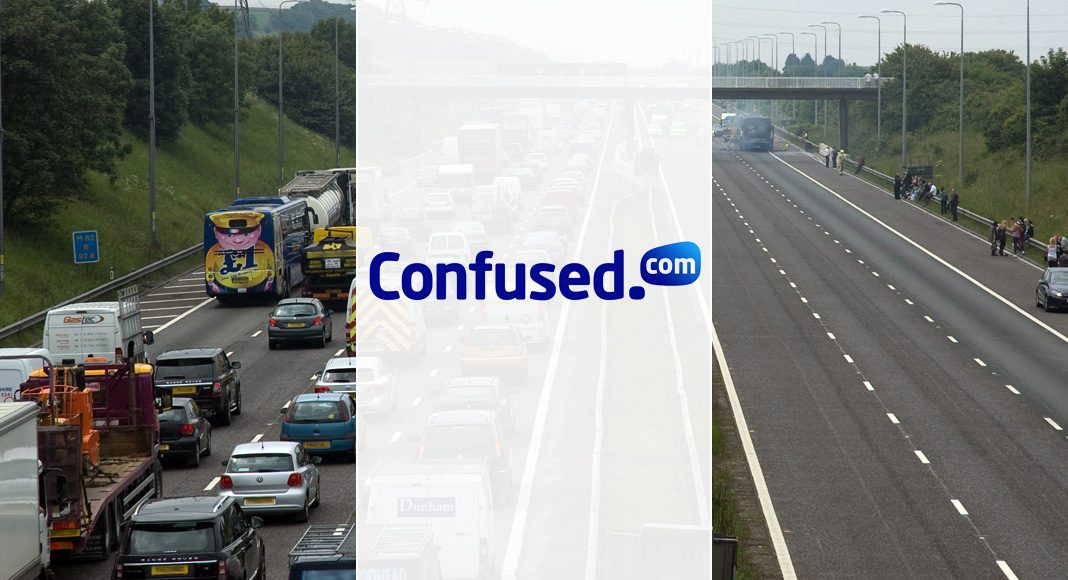Many drivers are guilty of slowing down to ‘rubberneck’ at road traffic accidents, with almost half of Brits (48%) arguing that it is normal to be curious at the scene of a traffic accident, according to new research from Confused.com.
Findings from the price comparison site reveal that almost three quarters of motorists (72%) admit to glancing at incidents as they drive past, with one in 10 (10%) claiming that they’d even reduce their speed if it meant getting a better look. However ‘rubbernecking’ – the act of slowing down in an attempt to view the aftermath of a crash – can often have serious consequences, such as increased congestion, minor accidents or, worse, fatal collisions.
In order to tackle the problem of rubbernecking and reduce the estimated £750m cost to the economy, Highways England purchased 105 sets of incident screens in 2009. The sets, costing £2.2m, contain a total of 3,000 individual screens each measuring 2.1m by 2m. They are used to deter drivers who stop to look at crashes on the opposite carriageway, slowing down the traffic behind and encouraging low speed collisions as a result.
Now, six years after the purchase, new data obtained by Confused.com reveals the screens have been used just 70 times in England and seven times in Scotland. The new data also reveals that, in addition to the original cost, £100,870 has been spent on maintenance, servicing, refurbishment and transportation since 1st January 2012.
The FOI data also reveals the rubbernecking ‘hotspots’ across the UK, where these incident screens are being used most frequently. Incident screens have been used most on the M1 motorway, a total of eight times since April 2013. They have also been used numerous times on the M25 (six times) and the M6 (six times) over the last two years.
According to the research, just 12% of motorists say they have seen these large incident screens in use on UK roads – which is perhaps not surprising giving the infrequency of which they have been used. Despite this limited use of the incident screens to date, more than a quarter of motorists (27%) think the police should always put up screens to block an accident from view.
And it’s perhaps easy to see why so many motorists share this point of view. According to the research, nearly half of motorists (47%) claim to have seen drivers slow down to have a look at a road traffic accident on the opposite carriageway, with nearly a fifth (17%) recalling hours being added on to their journey due to disruptive motorists reducing their speed to look at an accident on the other side of the road.
It is not just the hours of tailbacks caused by rubberneckers that are riling UK road users – 69% of motorists believe that stopping to look at a road traffic accident is dangerous, while a quarter (25%) see it as disrespectful to the victims involved or a voyeuristic exercise (19%). Yet it seems that many drivers just can’t fight the urge. One in seven (15%) have even seen fellow road users taking photos whilst passing crash sites.
Gemma Stanbury, head of Motor at Confused.com, says: “It’s concerning to see that so many motorists are distracted by road traffic accidents and are slowing down to take a look – even if it’s just a cursory glance. As tempting as it is to take your eyes off the road even for a second, to look at an accident, we’re advising drivers to fight the urge.
“We would hope that the use of these incident screens could reduce the likelihood of further collisions due to ‘rubbernecking’ and reduce disruption to traffic following an incident. However, as few people seem to have ever driven past one, it is difficult to judge what driver reactions will be.
“Our advice to motorists caught up in traffic following an accident is to stay safe – to keep their eyes on the road and focus on their own driving, to ensure they don’t end up involved in an accident themselves.”



















